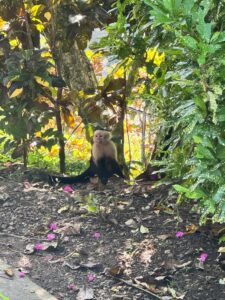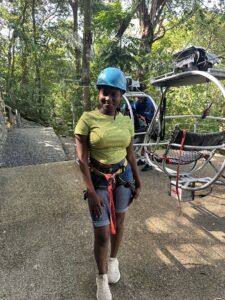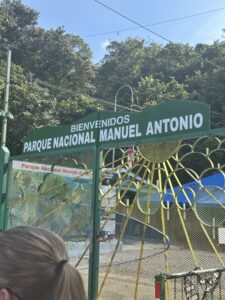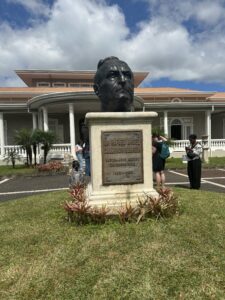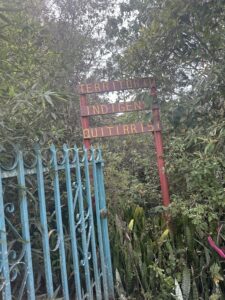AIFS Abroad in San José, Costa Rica: January
Major: Public Health, Sociology
Pre-departure (January 2, 2025)
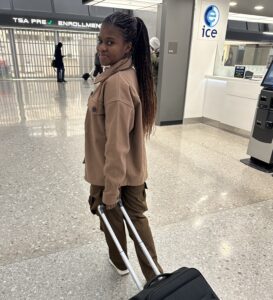 Hola a todos// Hello everyone!
Hola a todos// Hello everyone!
My name is Emmanuella Osei, and I’m a junior at UMBC. I’m so excited to share my study abroad journey with you all! This will be my second study abroad experience while at UMBC; My first was during the summer of 2023 (faculty-led study abroad program in Cape Town, South Africa). This winter, I’m heading to San José, Costa Rica, as part of the January Term Study Abroad program through AIFS.
Costa Rica is a country in Central America, located between Nicaragua and Panama. I have always wanted to visit a Spanish-speaking country, and I’m thrilled to finally have the opportunity to do so. Through this program, I’ll be taking a three-credit course titled Costa Rican Health Care and Tropical Medicine at Veritas University. As someone passionate about public health, I chose this course because it aligns perfectly with my interests. The course will provide valuable insights into the Costa Rican healthcare system and I’ll also learn more about tropical diseases common in Costa Rica. Overall, this experience will deepen my understanding of global health practices and enhance my ability to contribute to public health efforts both in the U.S. and internationally.
Another exciting aspect of this program is that it includes a homestay. For the entire duration of the program, I’ll be living with a local family. Initially, the thought of this was extremely nerve-wracking, but after learning more about my host family, I’m looking forward to it. This will be a great opportunity to immerse myself in Costa Rican culture and experience their way of life. I’m hopeful that spending time with a local family will also help me improve my Spanish language skills!
From the research I have done, I know that Costa Rica is a beautiful country. Costa Rica has a tropical climate and is also known for its biodiversity. In fact, it’s one of the most biodiverse places on Earth, home to about 5% of the world’s species. I’m excited to experience this firsthand and see everything Costa Rica has to offer. While most of my time will be spent in San José (the capital and largest city), the program will also take us on excursions to other parts of the country, including Manuel Antonio. I’m also looking forward to trying new foods. I’ve heard Costa Rican cuisine is delicious! I know this experience will push me out of my comfort zone, but I’m ready to embrace it.
As far as preparation goes, I’m almost done packing! I have also reviewed the course syllabus provided by the program and completed my orientation modules. This morning, my host family reached out to me, and I’m excited to meet them in person in just a few days!
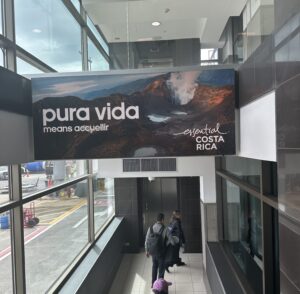 I’m really looking forward to this January Term study abroad experience, and I’m confident it will be incredibly fulfilling. I can’t wait to make lasting memories and continue learning along the way. I’m also excited to document my journey as a UMBC Education Abroad Ambassador this winter!
I’m really looking forward to this January Term study abroad experience, and I’m confident it will be incredibly fulfilling. I can’t wait to make lasting memories and continue learning along the way. I’m also excited to document my journey as a UMBC Education Abroad Ambassador this winter!
See you when I land in Costa Rica! Adiós!
In country post (January 9, 2025)
¡Pura Vida!
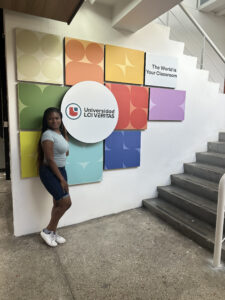 Hello everyone! I’m so excited to share an update on my first week here in Costa Rica. I arrived in San José on January 4th after a 5-hour flight from Washington D.C. (IAD). After landing, we made our way through immigration and customs. I knew this would be an adventure when the officer greeted me in Spanish and asked what I would be doing here, expecting me to respond in Spanish—let’s just say I wasn’t exactly prepared for that moment, haha! Thankfully, with my basic Spanish skills and some help from my peers, we got through it. Once we got out of the airport, my program (AIFS) drove us to our homestays, to meet our host family! I didn’t know what to expect but thankfully they were incredibly welcoming and made us feel at home. I’m living with two other students from my program which makes it even better. My host mom gave us a tour of their house and shared all the essential details we needed to know. I couldn’t believe I was finally here!
Hello everyone! I’m so excited to share an update on my first week here in Costa Rica. I arrived in San José on January 4th after a 5-hour flight from Washington D.C. (IAD). After landing, we made our way through immigration and customs. I knew this would be an adventure when the officer greeted me in Spanish and asked what I would be doing here, expecting me to respond in Spanish—let’s just say I wasn’t exactly prepared for that moment, haha! Thankfully, with my basic Spanish skills and some help from my peers, we got through it. Once we got out of the airport, my program (AIFS) drove us to our homestays, to meet our host family! I didn’t know what to expect but thankfully they were incredibly welcoming and made us feel at home. I’m living with two other students from my program which makes it even better. My host mom gave us a tour of their house and shared all the essential details we needed to know. I couldn’t believe I was finally here!
On my second day, I woke up around 7 a.m. to get ready for a long day ahead. My host mom made us gallo pinto, a traditional Costa Rican breakfast made of rice and beans, often served with eggs. I learned this is a popular dish here and I really enjoyed it. After breakfast, our host mom walked us to Veritas University (the school I’m taking a course at), which was just a short 5-minute walk from our house. We met up with the other students in my program, and from there, we boarded a bus for an orientation session at a hotel. It was an exciting day meeting everyone in my program (about 20 others) and enjoying a guided tour of San José.
Day 3 (Monday) marked the first day of school! We walked to the university for class, and I was excited to start my course: Costa Rican Healthcare System and Tropical Medicine. My professor is a doctor so it’s been great to learn about her experiences within the healthcare system. The class is from 8 a.m. to 12 p.m each weekday and the lectures have been really engaging. After our first class, our program showed us how to use the local bus system to get to the mall, since there are some students in my program staying here for an entire semester.
On day 4, after class, my new friends and I decided to visit a popular tourist destination called Hacienda La Chimba. We went on a nearly three-hour hike, and one of the highlights was taking pictures at the famous “La Mano” (The Hand). It was a great way to bond with others in my program and explore the natural beauty of Costa Rica. 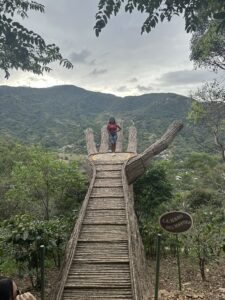
On day 5, we took a trip to Cartago, a province about an hour and a half from San José. There, we visited the Irazú Volcano, the highest active volcano in Costa Rica. The last eruption was in 1963; it’s unpredictable when it could erupt again. Unfortunately, it was rainy and cloudy, so we couldn’t get a clear view of the volcano, but it was still an exciting experience. We also visited the Basilica de los Ángeles, a beautiful and famous Catholic church. Costa Rica is a Catholic country by law and each year, on August 2nd, many Costa Ricans make a religious pilgrimage to honor the Virgin Mary by traveling on foot.
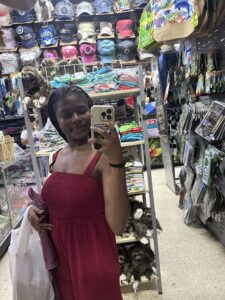 On day 6, we had class as usual, and after class, my friends and I visited the Mercado Central (Central Market) in downtown San José. It’s a bustling market filled with shops and vendors, and it was the perfect place to pick up souvenirs. I also had the chance to practice my Spanish while buying items!
On day 6, we had class as usual, and after class, my friends and I visited the Mercado Central (Central Market) in downtown San José. It’s a bustling market filled with shops and vendors, and it was the perfect place to pick up souvenirs. I also had the chance to practice my Spanish while buying items!
Today marks my seventh day in Costa Rica! After class, we packed up for a weekend trip to Manuel Antonio, organized by my program. As I write this, we’re on our way, and I am so excited. Tomorrow we have a guided tour through the Manuel Antonio park to explore wildlife. We just made a stop a few minutes ago to see some crocodiles, so I’m looking forward to experiencing more of Costa Rica’s biodiversity this weekend, and spending time at the beach! I’m incredibly grateful for this experience and can’t wait to see what the rest of the week has in store.
¡Pura Vida!
(“Pura Vida” is a common expression in Costa Rica, and it literally translates to “pure life” in English. However, its meaning goes beyond the literal translation. It embodies a way of life and a mindset. In Costa Rican culture, Pura Vida is used as a greeting, a farewell, or an expression of happiness, contentment, and appreciation for life. It reflects the laid-back, positive attitude that Costa Ricans (or “Ticos,” as they call themselves) are known for.)
In country post (January 17, 2025)
¡Hola! I’m excited to update you all on what I’ve been up to during my second week in Costa Rica. At the end of my last blog, I was on my way to Manuel Antonio, where I spent the weekend. Manuel Antonio is a popular destination in Costa Rica, about 3.5 hours from San Jose, known for its national park and beautiful beaches. While there, we visited the national park and saw various monkeys, sloths, birds, and many other animals! After walking through the park for about an hour, we arrived at the beach. It was a great time to relax and enjoy Costa Rica’s natural beauty. On the last day in Manuel Antonio, some friends and I decided to go zip lining and zip coasting. Although it was terrifying, we had so much fun!
We returned to San José on Sunday night, had dinner with my host family, and then got ready for the second and final week of school. This past week, we learned a lot more about the Costa Rican healthcare system and its pros and cons. We also studied diseases like dengue, 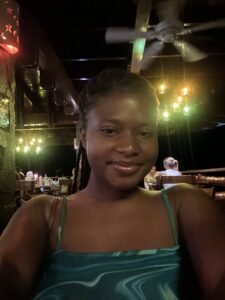 chikungunya, tuberculosis, chagas disease, and leishmaniasis, among others. Since Costa Rica is located in the tropics, mosquitoes are common which can spread many diseases. As part of our coursework, we had to pick a disease to present so my partner and I chose to research chikungunya, which we learned was first identified in Tanzania in 1952. We also compared a variety of health indicators in Costa Rica to the United States.
chikungunya, tuberculosis, chagas disease, and leishmaniasis, among others. Since Costa Rica is located in the tropics, mosquitoes are common which can spread many diseases. As part of our coursework, we had to pick a disease to present so my partner and I chose to research chikungunya, which we learned was first identified in Tanzania in 1952. We also compared a variety of health indicators in Costa Rica to the United States.
On Tuesday, we visited the Quitirrisí Indigenous Reservation, which is about 45 minutes from San José. This is a reservation for the Huetar Indigenous people of Costa Rica, one of the eight indigenous groups and 24 recognized territories in the country. There, one of the community leaders shared insights about Costa Rica’s history as it relates to indigenous populations. On Wednesday night, we had our farewell dinner at the Ram Luna restaurant. We enjoyed a beautiful view of San José, and it was bittersweet knowing that our time here is almost over. Thursday night, my friends and I went to a “Tropical Dance” class at the university, which was so much fun! It was a great opportunity to meet other study abroad students in different programs.
Today (Friday) is sadly my last full day in Costa Rica. These two weeks flew by, but I’m so glad I took the opportunity to come here. This morning, our class had a field trip to the Museo Dr. Rafael Calderón Guardia. Dr. Guardia was a prominent Costa Rican doctor and politician who served as president from 1940 to 1944. As a physician, he was passionate about healthcare and social reform and is best known for establishing Costa Rica’s universal healthcare system, known as the Caja Costarricense de Seguro Social (CCSS). I learned a lot about the history of healthcare in Costa Rica through visiting this museum.
Tomorrow, I’ll be saying goodbye to my new family here in Costa Rica, and returning back to the United States. I have made so many great memories these past 2 weeks and I can’t wait to return in the future!
Return Post (January 22)
Hello everyone!
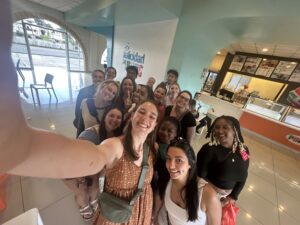 Unfortunately, my time in Costa Rica has come to an end, and I’ve been back home for a few days now. Looking back, my experience was amazing. I had the chance to immerse myself in Costa Rican culture, live with a local family, learn about their healthcare system, improve my Spanish and make lasting memories.
Unfortunately, my time in Costa Rica has come to an end, and I’ve been back home for a few days now. Looking back, my experience was amazing. I had the chance to immerse myself in Costa Rican culture, live with a local family, learn about their healthcare system, improve my Spanish and make lasting memories.
As a public health major, a key reason for choosing this program was to learn more about Costa Rica’s healthcare system. I had the opportunity to explore how it works, and here’s what I learned: The healthcare system in Costa Rica is organized into three levels of care. The first level, EBAIS (Equipo Básico de Atención Integral), consists of community-based health centers. When someone gets sick, they usually go to one of these centers, which are staffed by a physician, nurses, and assistants. Community health workers, known as ATAPs, also visit homes annually to assess healthcare needs. If necessary, patients are referred to the second level of care, which involves clinics with more specialized resources. The third level consists of large hospitals for more complex or serious health issues. Costa Rica’s healthcare system is widely regarded as one of the best in Latin America. Despite being a middle-income country, the nation’s health outcomes are comparable to those of wealthier countries, and in some cases, even better. For example, life expectancy in Costa Rica has increased from 55 years in 1960 to 81 years today, while in the U.S., it’s about 77 years.
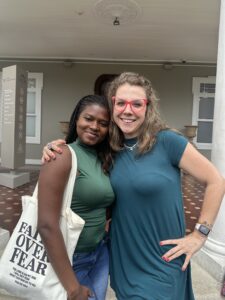 However, like any system, there are challenges. We learned about long wait times, staff shortages, and limited access to healthcare in rural areas. While people can make appointments through an app, it’s often hard to get a quick appointment due to high demand. Some remote areas are so hard to reach that doctors need helicopters to visit patients. Costa Rica also has a private healthcare system, which is an option for those who can afford it. Unfortunately, many doctors prefer to work in private healthcare because of better salaries and benefits. On our last day, we visited the Museum of Dr. Guardia, who is a key figure in the development of Costa Rica’s healthcare system.
However, like any system, there are challenges. We learned about long wait times, staff shortages, and limited access to healthcare in rural areas. While people can make appointments through an app, it’s often hard to get a quick appointment due to high demand. Some remote areas are so hard to reach that doctors need helicopters to visit patients. Costa Rica also has a private healthcare system, which is an option for those who can afford it. Unfortunately, many doctors prefer to work in private healthcare because of better salaries and benefits. On our last day, we visited the Museum of Dr. Guardia, who is a key figure in the development of Costa Rica’s healthcare system.
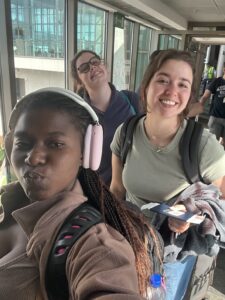 Another core part of this program was the homestay experience. In my pre-departure post, I mentioned feeling a little nervous about living with a local family, but I’m happy to share that it went smoothly. It was also fun because two other students and I lived with the same family. Our host parents were kind and made sure we always felt welcome. Turns out they’ve been hosting students from all over the world for about 20 years! The language barrier was a bit tricky at first since they weren’t fluent in English and we weren’t fluent in Spanish, but it turned into a great opportunity for all of us to learn. I expected to spend more time at home after class, but we often had excursions or activities planned. On our last evening, we played Uno with our host mom which was so much fun. On the final morning, I had breakfast alone with my host parents as my friends had early flights. It was a nice moment to reflect and ask them questions about their experiences living in Costa Rica and the healthcare system. They spoke mostly in Spanish, and I felt proud that I could understand most of what they were saying.
Another core part of this program was the homestay experience. In my pre-departure post, I mentioned feeling a little nervous about living with a local family, but I’m happy to share that it went smoothly. It was also fun because two other students and I lived with the same family. Our host parents were kind and made sure we always felt welcome. Turns out they’ve been hosting students from all over the world for about 20 years! The language barrier was a bit tricky at first since they weren’t fluent in English and we weren’t fluent in Spanish, but it turned into a great opportunity for all of us to learn. I expected to spend more time at home after class, but we often had excursions or activities planned. On our last evening, we played Uno with our host mom which was so much fun. On the final morning, I had breakfast alone with my host parents as my friends had early flights. It was a nice moment to reflect and ask them questions about their experiences living in Costa Rica and the healthcare system. They spoke mostly in Spanish, and I felt proud that I could understand most of what they were saying.
This trip was a wonderful reminder of how much I love exploring new parts of the world. I’m looking forward to my next adventure, and I’d love to return to Costa Rica someday to explore the many beautiful places I didn’t get to see this time.
Thank you all for following along on my journey through these blogs. I can’t wait to see more UMBC students studying abroad in the future!

